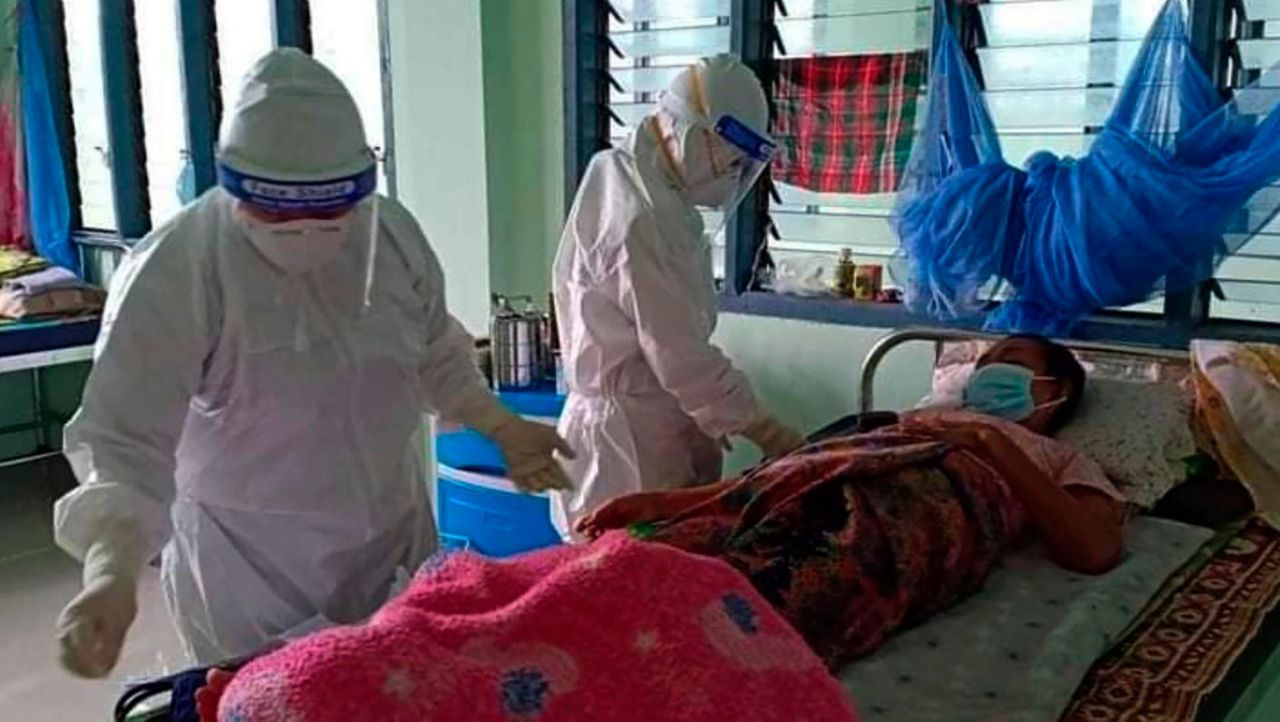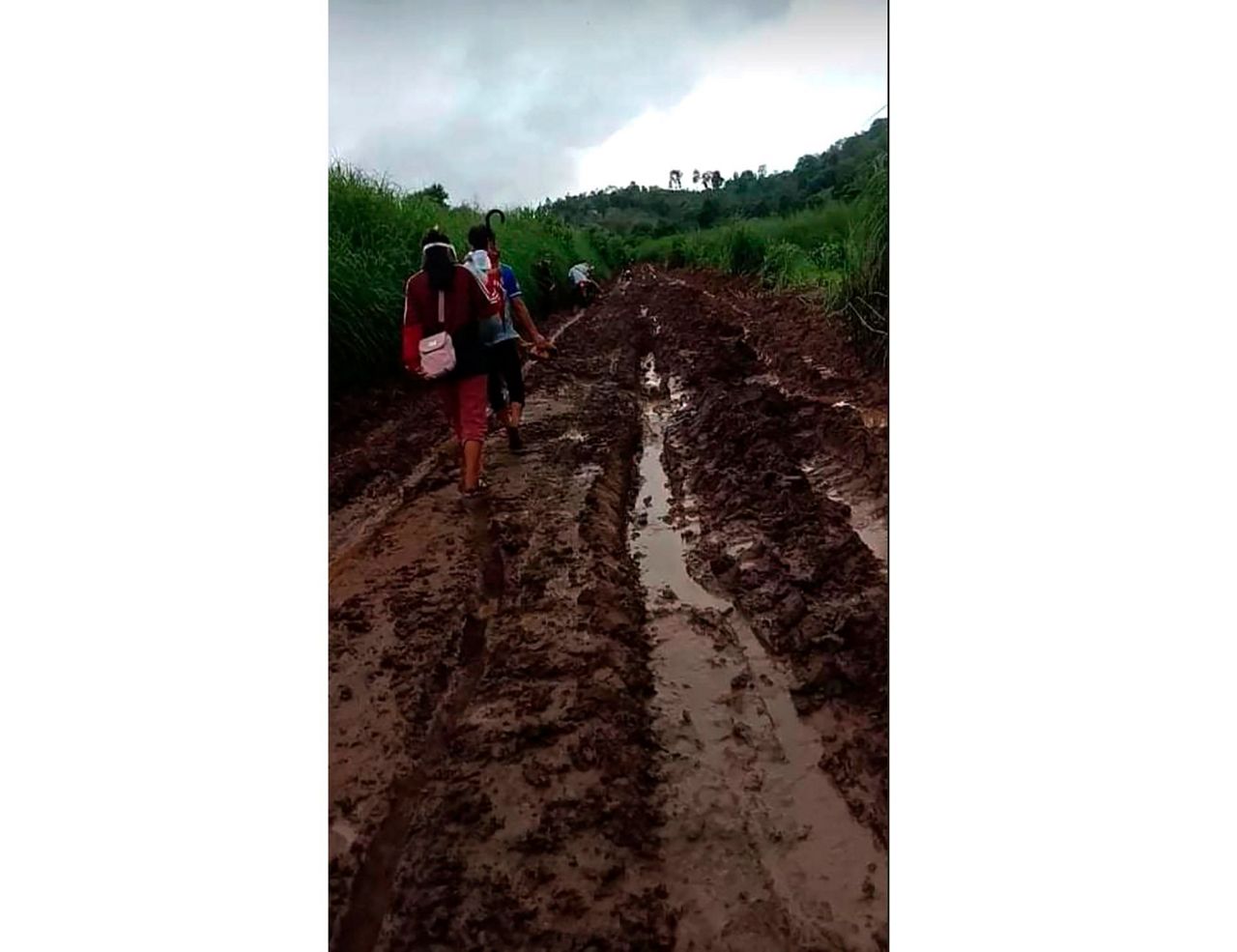JAKARTA, Indonesia (AP) — When February's military takeover of Myanmar led to the collapse of the central health care system, independent ethnic organizations that had operated for decades on the Southeast Asian country's borders stepped in. They provided basic medical services, treated COVID-19-patients and occasionally even tended to injuries from armed skirmishes.
But a fierce new wave of coronavirus cases, and myriad other challenges — closed borders, shrinking support from international donors, and a crackdown on aid by the military, which has been accused of hoarding medical supplies for its own use — are stretching their abilities to the limit.
“There is no transportation available to get proper medicine and food supplies,” a doctor working at a makeshift clinic in the jungle of eastern Myanmar told The Associated Press in a telephone interview. “There are not enough oxygen cylinders in our area and clinic. Because of heavy rain, there is also difficulty to even get clean water.”
The doctor’s name is being withheld to protect them from retaliation.
As of Wednesday, Myanmar had more than 363,000 cases of COVID-19, according to state-owned news media. That number is thought to be a vast undercount, as testing in the country of about 55 million people is limited. Cases first spiked in June, and many hospitals have been forced to turn away patients because of staffing shortages. Oxygen and medical supplies have been scarce, with the military accused of hoarding supplies for its own hospitals.
The per capita death rate in Myanmar was the worst in Southeast Asia during one week of July, when bodies were lined up outside overwhelmed crematoriums. The number of deaths is also likely an undercount, given that only those who die at medical facilities are included in the official figures.
Even before the recent coronavirus surge, the country's central health care system was collapsing as the military attacked and drove underground many medical providers who were early opponents of the February takeover. When cases began to rise, the government put a chokehold on needed supplies, restricting the sale of oxygen and halting the distribution of personal protective equipment in what human rights activists have called a blatant bid to consolidate power and crush opposition.
That's where the decentralized ethnic health care centers came in. The providers operate in Myanmar's border states, where a majority of the country's ethnic minorities live and where for decades about 20 armed ethnic organizations have been fighting the military for greater autonomy.
In northeastern Shan state, posters with COVID-19 health messaging — recommendations to practice social distancing, wash hands often and isolate at home — have been translated into local languages and distributed through social media by regional health care groups.
Farther south, in Karen state, local health volunteers travel by foot and motorbike with backpacks of medical equipment, educating villagers about health protocols. In other areas of the state, medics trained by local armed groups work to bring medicine and oxygen to patients via muddy dirt roads destroyed by the seasonal monsoon rains.
Several ethnic organizations across the country have even been able to inoculate their residents after obtaining vaccines from China, which has strengthened its COVID-19 response on the border to stop infections in Myanmar from crossing over. Such vaccinations have taken place in the regions of Kachin, Shan and Wa, all of which border China.
The important role of ethnic health care providers has gained recognition from Myanmar’s National Unity Government — an opposition force formed this year by ousted lawmakers that calls itself the country’s legitimate ruling body. In July, the coalition formed a task force to help ethnic groups confront COVID-19.
But now, these groups are facing serious challenges. For instance, they have traditionally used Myanmar’s porous border to import medical supplies, conduct medical trainings and — in severe cases — bring people into neighboring countries for medical treatment, said Sharon Bell, an independent researcher based in New Zealand who has studied ethnic health care systems in Myanmar.
The pandemic has prompted neighboring countries to nearly completely seal the borders, cutting off those options, Bell said. "Even before this wave of COVID-19, they had patients dying because they couldn't be evacuated,” she said of the border health providers.
Those who are able to make it across the border are faced with narrowing options for care. Previously relied-upon clinics — such as the Mae Tao clinic, which operates in the Thai-Myanmar border town of Mae Sot — have severely limited most of their services because of recent virus outbreaks among staff and the local community.
Reduced funding from international donors has been another blow to the groups.
When Aung San Suu Kyi’s National League for Democracy was elected in 2015, "many international organizations shifted funding away from the ethnic health organizations to work with the state health care system because they wanted to establish legitimacy by working inside Myanmar rather than cross-border activities,” Bell said. The funding that did remain for ethnic groups is now being blocked by the military, she said.
As the pandemic intensifies, there have been increased calls by activists and health care workers both inside and outside Myanmar for international donors to work directly with community groups along the border, said Jennifer Leigh, an epidemiologist and Myanmar researcher for Physicians for Human Rights.
“Those networks could be built up again very quickly as key mechanisms — it's one of the fastest and most efficient ways to get aid" into the country, she said. “We can't wait for a political resolution to solve this situation.”
The shift in aid seems to be starting. On Aug. 10, Linda Thomas-Greenfield, U.S. ambassador to the United Nations, announced that $50 million would “flow directly through international and nongovernmental organization partners” to provide aid for “vulnerable people from Myanmar,” including refugees and internally displaced people.
Back in the jungle of eastern Myanmar, doctors who work into the night seeing patients said they fear what will happen if aid and medical supplies don't reach their clinic soon.
“We won't be able to manage if too many more people get sick,” said the doctor who spoke to the AP by telephone. “We won't be able to help, and I am sure more will die.”
___
The Associated Press Health and Science Department receives support from the Howard Hughes Medical Institute’s Department of Science Education. The AP is solely responsible for all content.
Copyright 2021 The Associated Press. All rights reserved. This material may not be published, broadcast, rewritten or redistributed without permission.




